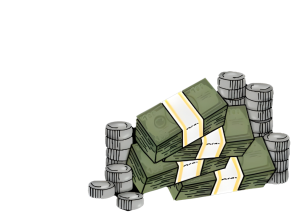Troy High School offers a variety of clubs for its students, providing a three-page long list on the school website. To participate, however, students are required to pay a yearly $50 to the school. Students across Troy High School are uninformed on the uses of these fees, which begs the question; where is the money going?
Athletics Coordinator Shane Hynes, who oversees all clubs for the 2023-2024 school year, explains that the fundamental difference is that “the official club is something that the [Troy School District] pays the advisor for. An unofficial club, they don’t get paid. The teachers are sincerely doing it out of the kindness of their heart to be the advisor for that program or that club.”

Another major difference between unofficial and official clubs is the ability to fundraise. According to Hynes, unofficial clubs are unable to fundraise on school grounds and cannot “have [Troy High School’s] name attached to it.” Official clubs, however, do not have these restrictions and are allowed to fundraise on school grounds and associate themselves with Troy High School.
It’s unknown if the Pay-to-Participate fee is for participating in only official clubs or for both official and unofficial clubs. However, Hynes says certain clubs, such as Student Government, have no pay-to-participate fee due to their time spent on planning events such as Homecoming and Prom.
Junior Alex Eichenlaub, leader of Gay-Straight Alliance, an official club, is uncertain of where the club fee goes and believes that their club doesn’t benefit from the $50. They assume that the school uses the fees for building funding for larger clubs at Troy High School.
Senior Michael Hong, Vice President of Writer’s League, an unofficial club, is also unsure of where the club fee goes. Hong speculates that “the fee is used not only to sustain the vast amount of clubs at [Troy High School,] but for other things, like school maintenance or miscellaneous funding.”
Hynes provides some clarification with his assumptions based on similar Pay-to-Participate fees that are required for sports: “Similar to athletics, there’s a $175 Pay-to-Participate fee. A lot of the money is used to offset stuff like coach’s salaries, bussing, transportation and some other things that require a lot of money over the course of the season.”
Hynes acknowledges that the lack of travel expenditures and officials may potentially result in an excess of money. He shares that “if there is leftover money, that probably goes back to the district general account which gets spread apart to wherever it may be needed.”

The $50 Pay-to-Participate club fees remain a mystery, with staff and students being uncertain of where the money is going. While there are assumptions about where the fees go, there has been no clarification of these concerns. Some members of the student body have expressed a desire for transparency in the use of these fees, including Hong.
“I feel like I don’t know enough about how [Troy High School] handles its flow of cash from students,” Hong says. “In order for the school to function, it’s not necessary for students to know, but I am curious as to where the money is going.”


